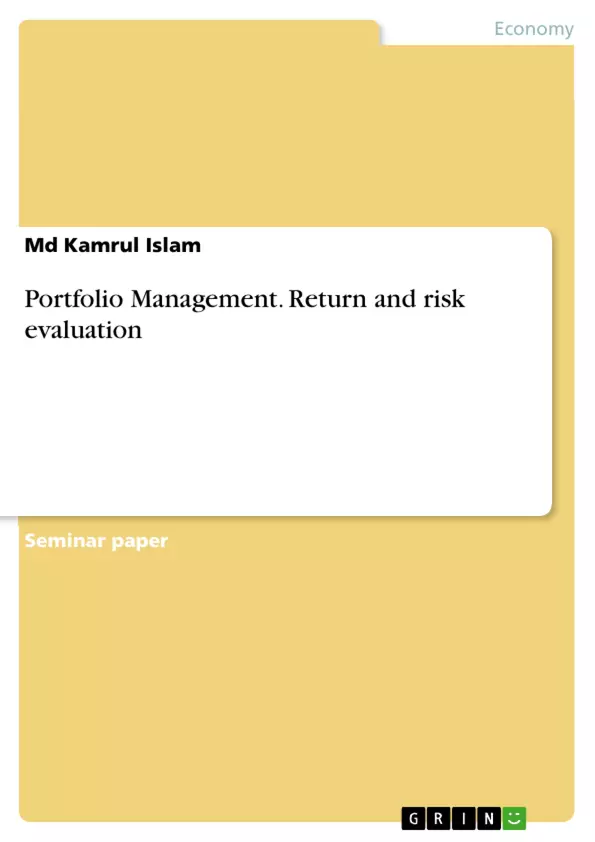It is very important for a company to identify the associated risks, understand the causes of risks and find out the way to minimize the risks and how these can affect the required return by investors in order to achieve its objectives.
The objective of this report is to consider and calculate the return and risks characteristics of the two investment funds managed by Thompson Asset Management. Information through standard deviation, correlation, beta calculation, Sharp ratio, Treynor ratio Jensen's Alpha, Tracking Error and Information Ratio have been obtained to prepare the report.
Inhaltsverzeichnis (Table of Contents)
- Introduction:
- Executive Summary:
- Return and risk characteristics of ProIndex fund
- Risk and return features of ProValue fund and compare with S&P 400
- Different level of investment in the ProValue fund:
- Active Vs Passive Investment
- Active investment
- The benefits of active investment
- The drawbacks of Active Investment
- Passive Investment:
- The benefits of passive investment
- The drawbacks of Passive Investment
- Appendix: 1.
- Appendix: 2...
- Appendix: 3
- Appendix: 4....
- Appendix: 5....
- Appendix: 6
- Appendix: 7.
- Appendix: 8
- Referrences:
Zielsetzung und Themenschwerpunkte (Objectives and Key Themes)
The report aims to analyze the return and risk characteristics of two investment funds, ProIndex and ProValue, managed by Thompson Asset Management. The analysis utilizes various performance metrics such as standard deviation, correlation, beta, Sharpe ratio, Treynor ratio, Jensen's Alpha, Tracking Error, and Information Ratio.
- Risk and Return Evaluation of Investment Funds
- Comparison of Active vs. Passive Investment Strategies
- Analysis of Performance Metrics and their Impact on Investment Decisions
- Portfolio Construction and Optimization
- Risk Management and its Implications for Portfolio Returns
Zusammenfassung der Kapitel (Chapter Summaries)
The report begins by introducing the importance of identifying and minimizing risks to achieve investment objectives. It then proceeds to analyze the ProIndex fund's return and risk characteristics, comparing its performance to the S&P 500 benchmark. The analysis includes calculations of daily holding period return, standard deviation, correlation, beta, Sharpe ratio, Treynor ratio, and Jensen's Alpha. The chapter concludes by highlighting the ProIndex fund's performance in terms of risk-adjusted returns.
The subsequent chapter focuses on the ProValue fund, evaluating its return and risk features in comparison to the S&P 400 benchmark. The analysis utilizes similar metrics as the previous chapter, providing insights into the fund's performance and risk profile.
Schlüsselwörter (Keywords)
The primary focus of the report is on return and risk evaluation, encompassing key concepts such as portfolio management, active and passive investment strategies, performance metrics (standard deviation, correlation, beta, Sharpe ratio, Treynor ratio, Jensen's Alpha, Tracking Error, and Information Ratio), and risk-adjusted returns. The analysis further delves into portfolio construction and optimization, demonstrating the importance of considering both return and risk in investment decision-making.
- Quote paper
- Md Kamrul Islam (Author), 2015, Portfolio Management. Return and risk evaluation, Munich, GRIN Verlag, https://www.grin.com/document/461501



